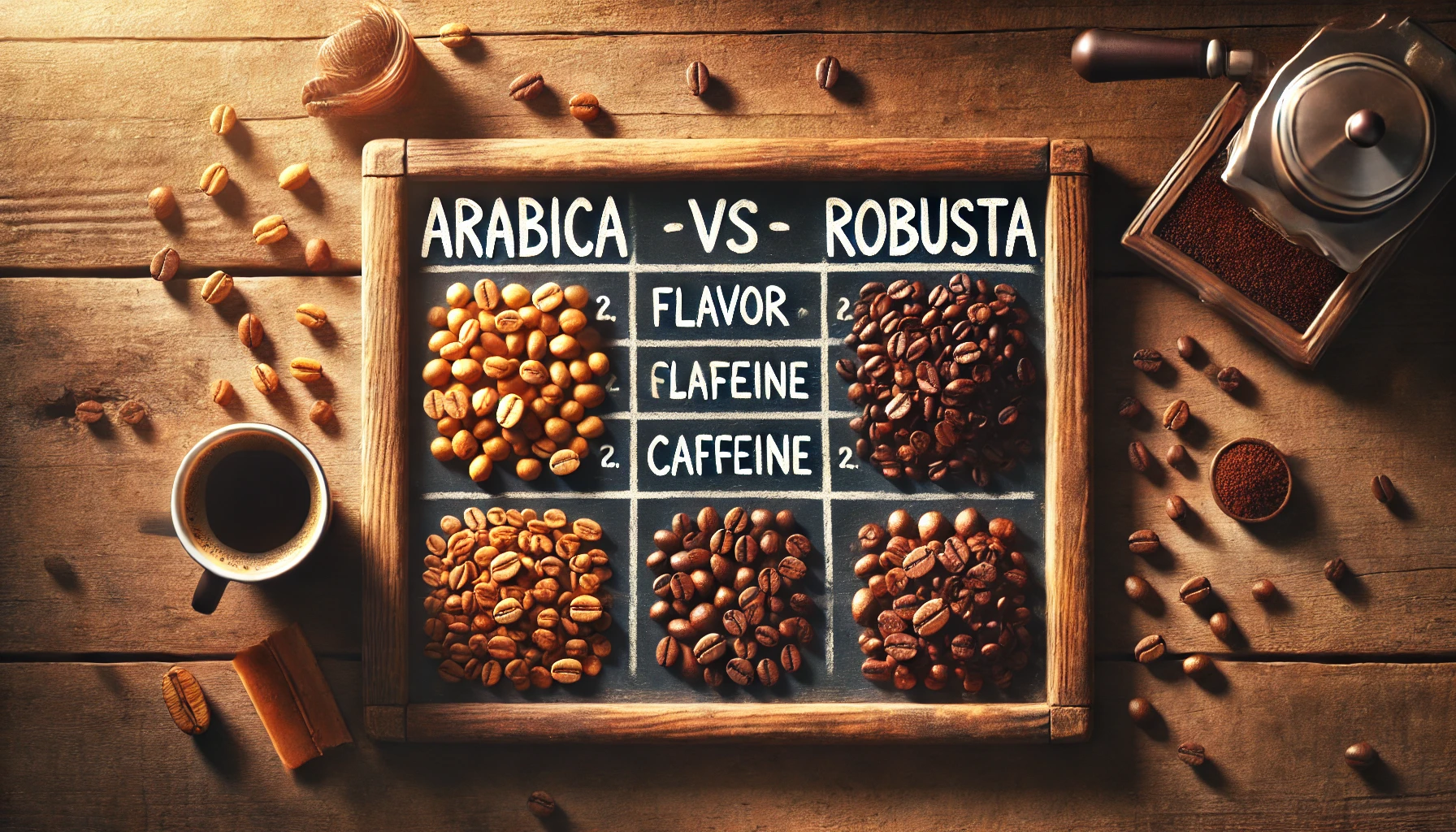If you’ve ever browsed the coffee aisle or explored specialty coffee shops, you’ve probably come across two common terms: Arabica and Robusta. These are the two main species of coffee beans used globally, and while they may look similar, they are worlds apart in flavor, growing conditions, and price.
In this article, we’ll break down the key differences between Arabica and Robusta coffee so you can make informed choices and elevate your coffee experience at home.
What Are Arabica and Robusta Beans?
Arabica (Coffea arabica) and Robusta (Coffea canephora) are the two most commercially important species of coffee. Each has its own unique characteristics and ideal growing environments.
Arabica Coffee
- Grown at higher altitudes (600–2000 meters)
- Represents about 60–70% of the world’s coffee production
- Known for its smooth, sweet, and often fruity or floral flavor
- Contains less caffeine (around 1.2%–1.5%)
- More delicate and expensive to grow due to susceptibility to pests and weather
Robusta Coffee
- Grown at lower altitudes (sea level to 800 meters)
- Represents about 30–40% of global coffee production
- Has a strong, bitter, and earthy flavor, sometimes with a nutty aftertaste
- Contains more caffeine (around 2.2%–2.7%)
- More resistant to pests and diseases, making it easier and cheaper to cultivate
Flavor Profiles: Arabica vs. Robusta
Flavor is often the deciding factor when choosing between Arabica and Robusta. Here’s what you can expect:
Arabica
- Taste: Sweet, soft, with hints of chocolate, berries, and floral notes
- Acidity: Higher acidity, similar to a crisp wine
- Texture: Smooth and well-balanced
Robusta
- Taste: Bitter, harsher, sometimes described as “rubbery” or “woody”
- Acidity: Low acidity
- Texture: Thicker crema when brewed, especially in espresso
Caffeine Content
Caffeine content is a big differentiator. Robusta has almost twice as much caffeine as Arabica. While that may sound like a plus, it affects the taste—more caffeine equals more bitterness.
If you prefer a milder cup or are sensitive to caffeine, Arabica is the way to go. On the other hand, if you’re looking for a strong kick in the morning, Robusta may serve your needs better.
Price and Availability
Arabica is more expensive to grow and harvest, which makes it more expensive for consumers. Its cultivation requires specific climates, higher altitudes, and more care.
Robusta is cheaper and more widely used in instant coffee and mass-market blends, making it a budget-friendly option.
Crema in Espresso
If you’re into espresso, you’ve likely noticed that some blends have a thicker, richer crema. That’s often due to the inclusion of Robusta beans. Baristas often use a small percentage of Robusta in espresso blends to create that dense, foamy crema on top.
Health Benefits: Is One Better?
Both types of coffee offer health benefits, including antioxidants and potential protection against diseases like Parkinson’s and Type 2 Diabetes.
- Robusta has more antioxidants and caffeine, which may provide a stronger boost in energy and alertness.
- Arabica, with its lower acidity and caffeine, may be gentler on the stomach and better for people with digestive sensitivities.
Which One Should You Choose?
Here’s a quick guide to help you decide:
| Preference | Go For |
|---|---|
| Smooth, sweet, and rich flavor | Arabica |
| Strong, bitter, bold taste | Robusta |
| Lower caffeine | Arabica |
| High caffeine boost | Robusta |
| Premium, specialty coffee | Arabica |
| Budget-friendly option | Robusta |
| Best crema for espresso | Robusta (or a blend) |
Can You Blend Arabica and Robusta?
Yes! Many commercial coffee blends combine Arabica and Robusta to balance flavor, price, and crema quality. For example, a 70% Arabica and 30% Robusta blend is popular in espresso for providing both flavor complexity and crema thickness.
Final Thoughts: It’s All About Your Taste
At the end of the day, the best coffee is the one you enjoy drinking. Arabica may be the favorite among specialty coffee lovers, but Robusta has its place—especially in strong espresso or instant coffee blends.
If you’re new to brewing at home, try both! Explore different roasts and blends, and keep notes on what you like. The more you taste, the better you’ll understand your own preferences.


